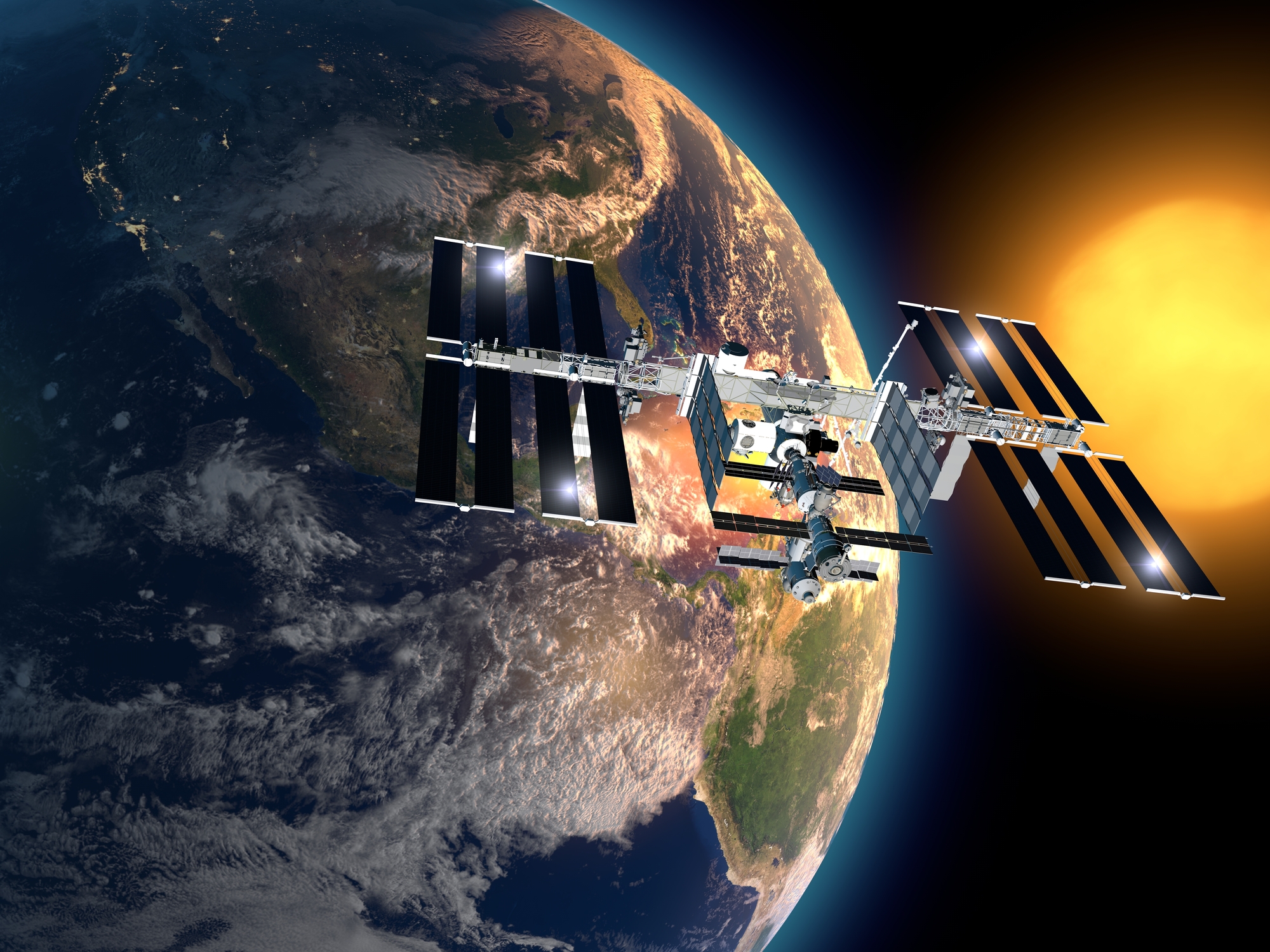Did you know that the solar-powered International Space Station (ISS) is visible from Earth? It’s easy to spot if you know where and when to look. The third brightest object in the sky, it looks like a fast-moving plane only much higher and traveling much faster.
Zipping along at an average speed of 17,500 mph and completing 16 orbits per day, the ISS is only visible because it reflects sunlight. The best time to view the ISS is either at dawn or dusk. It can be seen passing overhead from several thousand worldwide locations. Go to SPOT THE STATION to find out when it will be in your neighborhood, and to sign up for text or email alerts for the next time it’s visible in your area.
Solar powered. The ISS is indeed powered by solar, using large solar arrays to collect the sun’s energy and convert it into electricity used for “everything from life support and temperature controls to communications with Earth and propulsion systems to allow the station to dodge debris.”
Solar upgrade. When installed in 2009, there were four solar arrays containing 262,400 solar cells. With large numbers of increasingly complex science experiments being performed on the station, the power requirements are going up. A solar energy upgrade required astronauts during three spacewalks to install six new arrays sitting in front of the older arrays which are still operational, allowing power to be drawn from both. Four of the new arrays were installed in 2022; the other two are scheduled for this year.
ISS to retire in 2031. NASA recently announced that it will keep the International Space Station running through the end of this decade, before decommissioning it in 2031 by intentionally crashing the orbiting outpost into the southern Pacific Ocean.
Originally set to be retired in 2024, the White House extended its operation through 2030. During its remaining years, NASA said it “plans to continue conducting research aboard the ISS while also using the lab to support deep-space exploration. In its report, the agency said it will bolster commercial ventures to develop new destinations in low-Earth orbit”.
Watery grave. NASA plans to aim for a region known as Point Nemo, an open and uninhabited stretch of water east of New Zealand. This remote area is nicknamed “spacecraft cemetery” because space agencies and aerospace firms often intentionally land defunct spacecraft there. READ MORE

